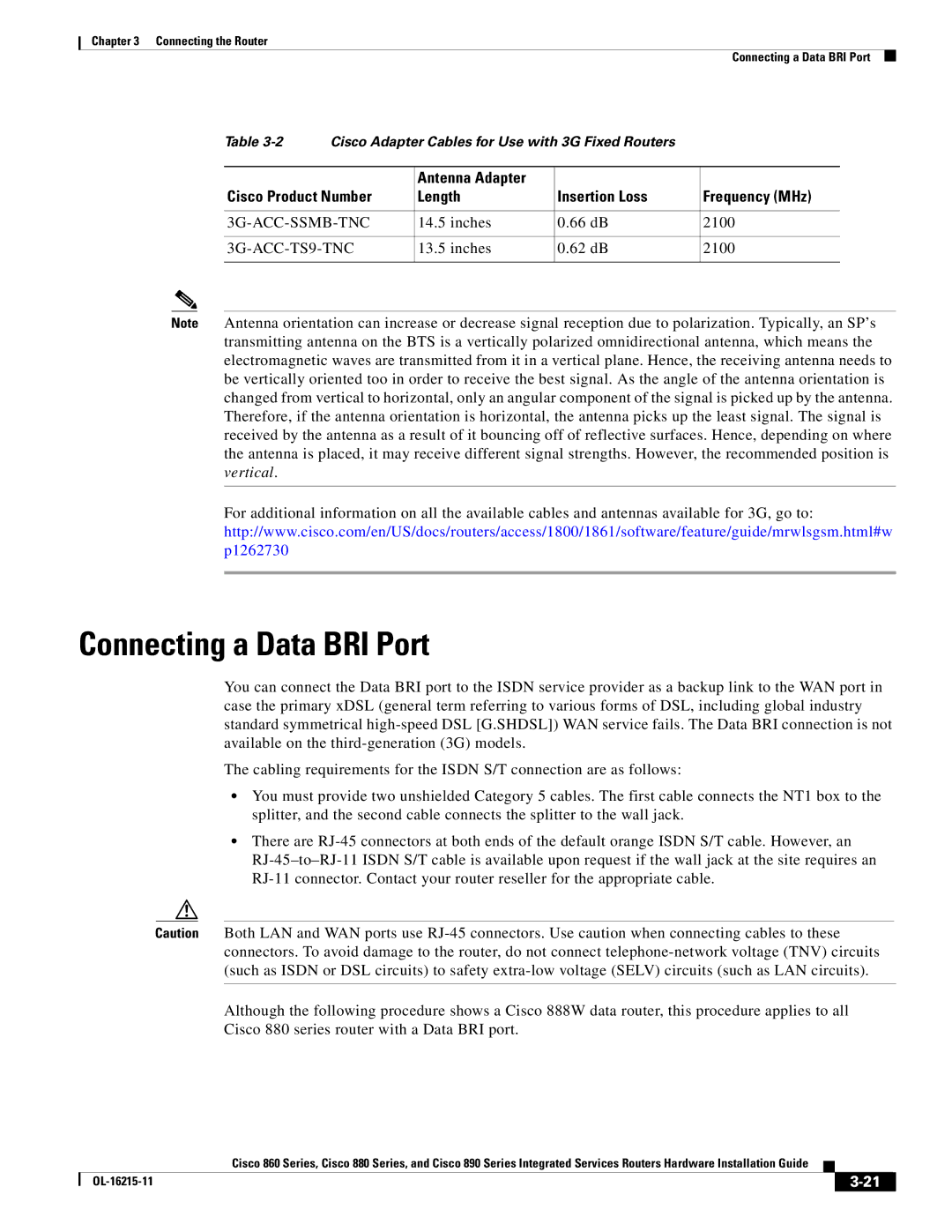
Chapter 3 Connecting the Router
Connecting a Data BRI Port
Table | Cisco Adapter Cables for Use with 3G Fixed Routers |
| ||
|
|
|
|
|
|
| Antenna Adapter |
|
|
Cisco Product Number | Length | Insertion Loss | Frequency (MHz) | |
|
|
|
| |
14.5 inches | 0.66 dB | 2100 | ||
|
|
|
| |
| 13.5 inches | 0.62 dB | 2100 | |
|
|
|
|
|
Note Antenna orientation can increase or decrease signal reception due to polarization. Typically, an SP’s transmitting antenna on the BTS is a vertically polarized omnidirectional antenna, which means the electromagnetic waves are transmitted from it in a vertical plane. Hence, the receiving antenna needs to be vertically oriented too in order to receive the best signal. As the angle of the antenna orientation is changed from vertical to horizontal, only an angular component of the signal is picked up by the antenna. Therefore, if the antenna orientation is horizontal, the antenna picks up the least signal. The signal is received by the antenna as a result of it bouncing off of reflective surfaces. Hence, depending on where the antenna is placed, it may receive different signal strengths. However, the recommended position is vertical.
For additional information on all the available cables and antennas available for 3G, go to: http://www.cisco.com/en/US/docs/routers/access/1800/1861/software/feature/guide/mrwlsgsm.html#w p1262730
Connecting a Data BRI Port
You can connect the Data BRI port to the ISDN service provider as a backup link to the WAN port in case the primary xDSL (general term referring to various forms of DSL, including global industry standard symmetrical
The cabling requirements for the ISDN S/T connection are as follows:
•You must provide two unshielded Category 5 cables. The first cable connects the NT1 box to the splitter, and the second cable connects the splitter to the wall jack.
•There are
Caution Both LAN and WAN ports use
Although the following procedure shows a Cisco 888W data router, this procedure applies to all Cisco 880 series router with a Data BRI port.
|
| Cisco 860 Series, Cisco 880 Series, and Cisco 890 Series Integrated Services Routers Hardware Installation Guide |
|
| |
|
|
| |||
|
|
|
|
| |
|
|
|
| ||
